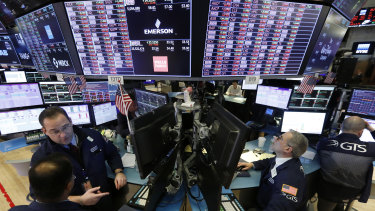This sharemarket bubble will burst, but probably not for a while
Last week the veteran investor and market guru Jeremy Grantham warned that stock markets were in a bubble that would inevitably burst. He said the US equity market was more overvalued now than on the eve of the Great Crash of 1929. The markets responded by continuing to rise. But does he have a point?
If you are an investor in the UK equity market you will probably find his warning surprising. Despite recent rises, the FTSE 100 is still nowhere near its pre-Covid highs. To a large extent, this reflects the composition of the index.

It is heavily dominated by banks, energy companies and miners, with a relatively low representation of hi-tech companies whose fortunes – and share prices – have soared during the pandemic. By contrast, the US S&P 500 is decidedly tech-heavy. In addition, there is a bit of a discount in UK markets for the supposedly negative effects of Brexit.
But on the US market Grantham certainly does have a point. While the economy has floundered, the stock market has continued moving upwards so that it is now far higher than it was before the pandemic hit.
One of the most widely used metrics to assess market valuations is a measure developed by the economist Robert Shiller. It averages corporate earnings over the 10 preceding years and compares the resulting number with the price of stocks. The Cyclically Adjusted Price Earnings ratio (CAPE) is higher now than at its peak in 1929 and not far off the record levels registered in 2000, just before the dotcom crash. So the warning lights are flashing.
Yet this is not necessarily conclusive. Across the developed world, bond yields are next to zero and in some cases actually negative. Since there is still, on the whole, a bit of inflation, real yields are decidedly negative. If you adjust for negative real yields then even the US stock market does not look overvalued.
Indeed, the gap between the earnings yield on US equities and the real yield on US bonds looks relatively generous. It is roughly 3.5pc, compared with minus 0.5pc just before the Great Crash of 1929 and minus 1pc just before the dotcom crash. On this basis, you could even argue that US equities look pretty good value.
[Share] prices have shot up way beyond what you might reasonably consider justified by real economic performance. I suspect that at some point this pattern will reverse.
But are negative real bond yields bound to last? Of course, on the whole, market operators believe that they are. That is why bond yields are what they are. But that doesn’t mean to say that they are right. In essence, bond yields are so low because at a global level there is an excess of desired savings over desired investment. This has threatened to depress aggregate demand and has obliged central banks to keep interest rates ultra-low and to pump money into the system.
The reasons for this are much debated. But whatever the ultimate causes, this situation is not bound to endure. Once COVID-19 is out of the way, there is going to be an enormous bounceback of aggregate demand.
Moreover, looking to the longer term, demographic influences will probably reduce desired savings. Meanwhile, there are a number of factors that could boost real investment demand, including the opportunities unleashed by AI and robotics. The result would be a rise in equilibrium real interest rates and bond yields. Admittedly, for the immediate future, central bank policy will be to stop this – and probably anything else – from having major adverse effects on bond yields. The US Fed has made clear that it will not seek to raise interest rates immediately even if inflation exceeds its 2pc target.
This means that, as and when inflation rises, real interest rates are set to fall even further from their current negative level. This could yet give a further boost to asset prices across the system, underpinning a further substantial bull run in equities.
Nevertheless, I am troubled. If central banks are set on keeping real interest rates negative then inflation could rise to uncomfortable levels. Would they simply sit back and allow this to happen? There would be severe political and economic ramifications.
Another surge in equity markets would increase wealth inequality still further since equities are disproportionately held by the rich. By contrast, small savers on the whole hold their money in deposits whose value is eroded by inflation. They would be clobbered yet again. Moreover, the further that equities are driven up in the next few years, the greater will be the ensuing adjustment.
I suppose that governments and central banks would initially try to take other measures to restrain inflation in the hope that they could avoid raising interest rates. But in the end this wouldn’t succeed. At some point in the future there lies not only an upsurge in inflation but also an increase in real interest rates, feeding through into bond yields. As and when this happens it would undermine equity valuations.
In an ideal world, the central banks would tighten policy only gradually, allowing bond yields to rise only gradually, perhaps accompanied by real equity values deflating only gradually, without a market crash or major financial dislocation. But achieving that is going to be a superhuman task. On the whole, when there is an economic transformation or a sea change in policy, markets do not respond gradually.
Over recent years, global equity markets have enjoyed a bonanza. Prices have shot up way beyond what you might reasonably consider justified by real economic performance. I suspect that at some point this pattern will reverse. I suspect that for the immediate future Grantham will be proved wrong. Yet, looking further out, I have a nasty feeling that he will be proved right.
Roger Bootle is chairman of Capital Economics
The Telegraph
Most Viewed in Business
Source: Thanks smh.com